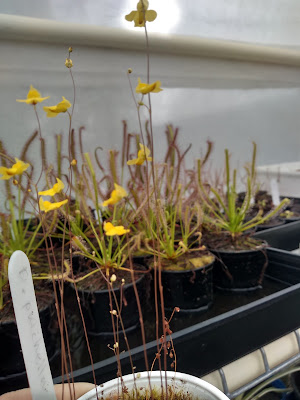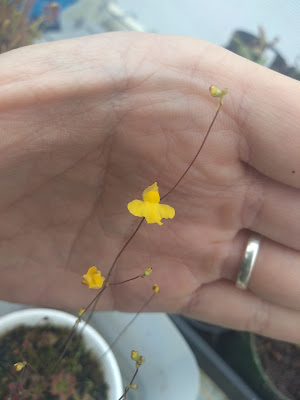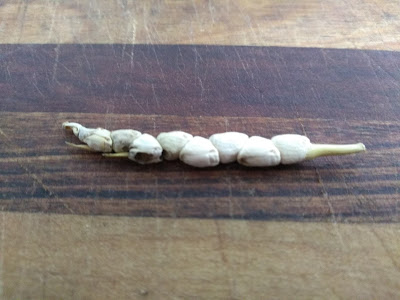Variegated water parsley Oenanthe javanica (flamingo), is also called water celery, water parsley, Java water dropwort, Japanese parsley, Chinese celery, rainbow water parsley, minari (미나리), and has a bunch of other common names.
Variegated water celery is a perennial vegetable or perennial herb that is very simple to grow and very productive. I am told that this perennial vegetable has a native range that extends between Siberia, Tropical and Subtropical Asia, India, Papua New Guinea, and some of the northern parts of Australia.
Strangely this plant appears to be distributed across a lot of tropical places, yet survives harsh frosts with no issues whatsoever. I think any plant that is native to tropical Asia as well as Siberia to be rather perplexing. It also means that this plant is likely to survive anywhere as long as there is enough water and sunlight.
As this plant can survive and even thrive across such a wide environmental range, and given how productive it is, I don't understand why it is so uncommonly grown.
 |
| Variegated water parsley |
I wrote another blog post on this plant back in 2017 and had already been growing it for a few years at that stage. I still have the same plants, they continue to thrive with less than ideal conditions and a lot of neglect. I had wanted the all green form as I am told it grows more aggressively, but I only have the far prettier variegated one.
I have been growing variegated water parsley for a few years, and it has to be one of the easiest of edible plants to grow. Even the 'weaker' variegated form grows like mad in my garden. Even though it is very productive we don't tend to eat much of this plant, I do feed it to our animals and enjoy how ornamental it looks.
 |
| Variegated water parsley leaves |
Water celery plants love water so much that they can grow with roots submerged and leaves above water. I have grown some like this in a bucket of mud for several years and they look great and perform well with no care from me other than topping up the water from time to time. I also grow some on a pot of water that is floating in my goldfish barrel, it seems to perform well in these conditions too.
They can also be grown in regular garden soil with regular watering. They don't appear to die if grown in drier soils, but also don't perform their best without watering. They are rather vigorous and forgiving of less than ideal conditions.
 |
Variegated water celery loves to spread
|
Variegated water celery flowers but I have not yet been able to grow any seedlings. Unfortunately I tend to loose track of the flowers and have never found out if they can produce fertile seed.
I find that the plant grows some underground rhizomes and divides a bit in this way.
This plant also throws above ground runners similar to what strawberry plants do, and it divides quickly in this way. Last year I grew some in little pots to sell at a garage sale, and they grew runners that spread into all the nearby pots of other plants.
They can handle full sun, but seem to do better with a little shade. If they are in too deep shade the leaves get stretched and it throws runners in search of sun. I assume the all green form can handle more shade than the variegated form.
 |
| Variegated water celery leaves |
Water celery tastes and smells a lot like weak celery, and a little like parsley. It is not the strongest flavour, and it gets weaker with cooking. It can be eaten raw, or added at the end of cooking.
As well as being edible by people, animals can also eat this plant. Chickens, guinea pigs, ducks etc all seem to enjoy eating the leaves. Given how nutritious this plant is, and how quickly it can grow, this is a good thing.
The leaves and stems of this edible herb are various amounts of green, white, pink, and are pretty all year. In cooler weather, or while the plant is under any stress, they tend to get a lot more of the pink colouration. Sometimes the leaves go a bit purple, this is usually an indication of stress. Harsh frosts can cause this purple colouration. It doesn't seem to change the taste, so is not a problem.
I planted one small plant in each of the pots below, each of them has divided quickly into multiple plants and also sent out a few runners. It is difficult to see in the photos below, but most of them have also grown out of the drainage holes. This plant likes to survive!
I sell bare rooted plants of variegated water celery through my
for sale page. I don't expect to ever run out of this plant, ever, so if it is not listed on my page feel free to ask me about it.





















































